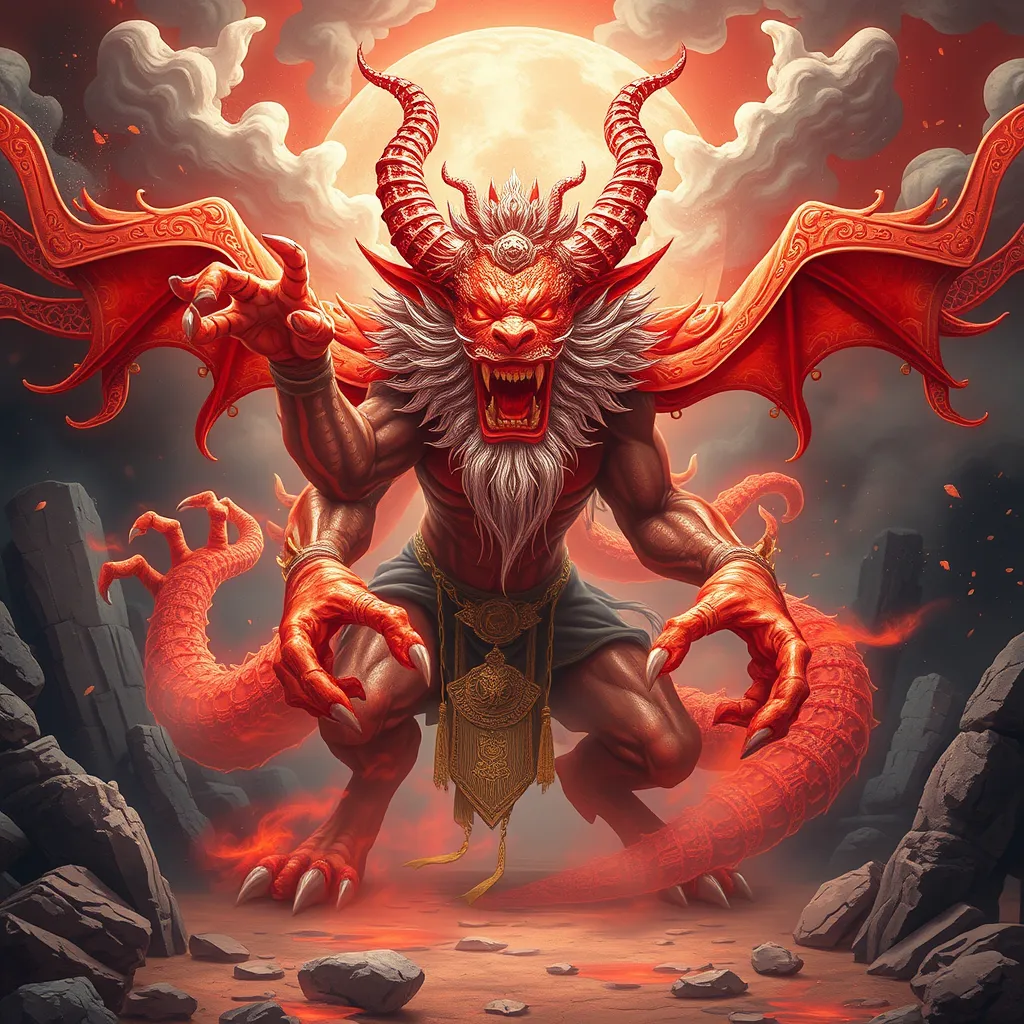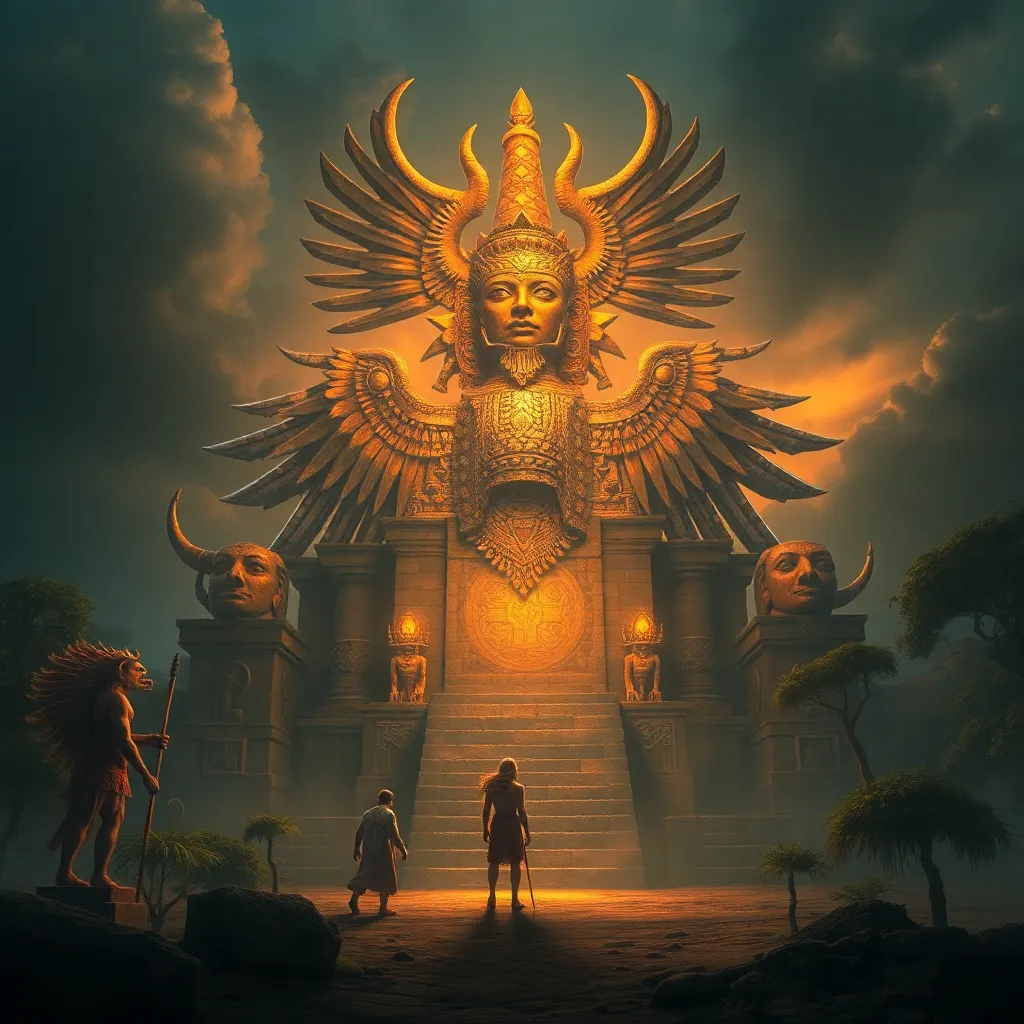The Rakshasa in Chinese Folklore: The Demons of Ancient Legends
I. Introduction
The term “Rakshasa” originates from ancient Hindu mythology, referring to a class of demons known for their malevolent traits and supernatural powers. These beings are often depicted as beings that disrupt the natural order and embody chaos. In the context of Chinese folklore, Rakshasa have also carved a niche, appearing in various tales and legends that reflect cultural fears and moral teachings. This article aims to explore the significance of Rakshasa in Chinese folklore, tracing their historical origins, characteristics, and cultural representations.
II. Historical Origins of Rakshasa
A. Roots in Hindu mythology
The concept of Rakshasa is deeply embedded in Hindu texts, where they are often portrayed as adversaries of the gods and protectors of the underworld. They are known for their cunning and ability to shape-shift, making them formidable foes in epic narratives like the Ramayana. In these stories, Rakshasa often symbolize the primal instincts of anger and lust, standing in opposition to the divine order.
B. Introduction to Chinese culture
As Buddhism spread from India to China, many aspects of Hindu mythology, including the figure of the Rakshasa, were assimilated into Chinese culture. The adaptation process was gradual, leading to a unique interpretation of these demons within the Chinese mythos.
C. Evolution of the Rakshasa legend in China
Over time, Rakshasa evolved in Chinese folklore, often depicted as less malevolent than their Hindu counterparts. In some tales, they became more complex characters, sometimes portrayed as tragic figures rather than purely evil entities. This evolution reflects the changing cultural attitudes towards demons and supernatural beings in Chinese society.
III. Characteristics and Attributes
A. Physical traits and appearances
Rakshasa in Chinese folklore are often described with a variety of physical traits, depending on the specific tale. Common attributes include:
- Fierce and terrifying appearances, often with grotesque features.
- Ability to shape-shift into animals or humans.
- Distinctive markings or tattoos that signify their supernatural origins.
B. Powers and abilities
These demons are endowed with various powers that make them formidable, including:
- Superhuman strength and agility.
- Magical abilities that allow them to manipulate the environment.
- Skills in illusion and deception, often leading to the downfall of their victims.
C. Common behaviors and motivations
Rakshasa are typically motivated by desires such as revenge, power, and chaos. They often engage in:
- Kidnapping and torturing heroes or virtuous beings.
- Disrupting rituals and ceremonies that maintain societal order.
- Seeking to gain control over human realms through fear and manipulation.
IV. Rakshasa in Chinese Literature
A. Notable literary references and texts
Rakshasa appear in various Chinese literary works, including classical texts such as “Journey to the West” and “The Investiture of the Gods.” In these works, they often serve as antagonists, challenging the protagonists and representing the forces of chaos.
B. Analysis of Rakshasa characters in Chinese stories
In literature, Rakshasa are typically depicted as complex characters that embody both evil and vulnerability. Their stories often serve as cautionary tales, warning against the dangers of unchecked desire and moral decay.
C. Comparison with other supernatural beings in folklore
Unlike other supernatural beings in Chinese folklore, such as dragons and fairies, Rakshasa are primarily associated with chaos and malevolence. However, their role as adversaries can also serve to highlight the virtues of the heroes they confront.
V. Cultural Representations and Symbolism
A. Rakshasa as a symbol of chaos and disorder
In Chinese culture, Rakshasa symbolize the disruption of harmony and the threat to societal order. Their presence in folklore serves to reinforce the importance of moral integrity and the consequences of straying from righteous paths.
B. Role in moral lessons and cautionary tales
Many stories featuring Rakshasa convey moral lessons, illustrating the dangers of greed, pride, and betrayal. These narratives serve as reminders of the importance of virtue and the potential for darkness that lies within humanity.
C. Artistic representations in traditional and modern media
Rakshasa have inspired various forms of artistic expression, including:
- Traditional Chinese paintings depicting epic battles between heroes and demons.
- Modern adaptations in films and television series that reinterpret their character for contemporary audiences.
- Video games featuring Rakshasa as formidable foes or playable characters, showcasing their powers and abilities.
VI. Rakshasa in Contemporary Chinese Society
A. Influence on popular culture (films, television, games)
In recent years, the figure of the Rakshasa has made significant appearances in popular culture. Films and television series often portray them as complex villains with rich backgrounds, reflecting modern societal fears and challenges.
B. Modern interpretations and adaptations
Contemporary adaptations of Rakshasa stories often emphasize their tragic elements, exploring themes of redemption and the struggle between good and evil. This shift reflects a broader cultural trend towards understanding the complexities of character motivations.
C. Continuation of the Rakshasa tradition in festivals and rituals
Rakshasa continue to play a role in various Chinese festivals and rituals, where they are invoked to ward off evil spirits and restore balance. This practice underscores their enduring significance in the cultural landscape.
VII. Comparisons with Similar Entities in Other Cultures
A. Similarities with demons in Japanese and Korean folklore
Rakshasa share similarities with demons in other East Asian cultures, such as the Oni in Japan and the Dokkebi in Korea. These beings often embody chaos and serve as antagonists in folklore.
B. Cross-cultural analysis of supernatural beings
A comparative analysis reveals that while the characteristics of these demons vary, their roles as disruptors of order and morality remain consistent across cultures. This highlights the universal themes of good versus evil in human storytelling.
C. Impact of globalization on the perception of Rakshasa
Globalization has facilitated the exchange of cultural narratives, leading to a broader understanding and reinterpretation of Rakshasa in various contexts. This has resulted in a richer portrayal of these beings in modern media.
VIII. Conclusion
A. Summary of key points
The Rakshasa in Chinese folklore represent a fascinating intersection of ancient mythology and cultural evolution. Their characteristics, stories, and symbolic meanings offer insights into the human psyche and societal values.
B. The enduring legacy of Rakshasa in modern culture
As both cultural symbols and characters in literature and media, Rakshasa continue to resonate with audiences today, reflecting ongoing themes of chaos, morality, and the complexity of the human experience.
C. Invitation for further exploration and research on the topic
For those interested in delving deeper into the rich tapestry of Rakshasa lore, further research and exploration are encouraged. The study of these demons not only enhances our understanding of folklore but also invites reflections on contemporary societal issues.



